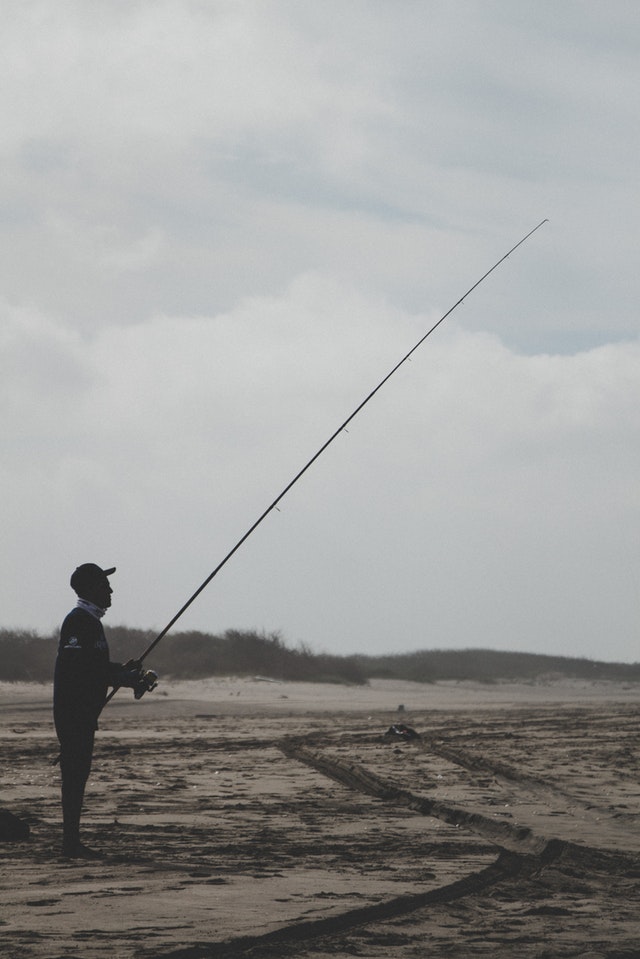Spinning and Casting Rods
Spinning
and Casting Rods
A
spinning reel is suspended at the bottom of the rod and the axis of the spool
is aligned with the rod. These are sometimes called open-face reels.
Most
spin cast reels rest on the top of the cane but are surrounded by a line that
exits the front through a small opening. These two elements are immune from the
effects of the backlash because the line comes out of a fixed reel.
A
reel, or bait caster, rests on the top of the cane, its axis being
perpendicular to the cane. These generally have better accuracy than rotation,
but are subject to backlash when the spool exceeds the line and requires an
inch of caution and consequent practice.
Throwing
in a stiff wind is difficult. There is much more to the uses of each.
Spinning
The
spinning rods are made of graphite or fiberglass with a handle made of cork or
PVC foam and tend to measure a length of between 1.5 and 3.6 meters. As a
general rule, throwing rods have between 5 and
8 guides along the underside of the cane to help control the line.
The
size of the eyes decreases from the handle to the tip, the one closest to the
handle being generally much larger than the rest, which makes it possible to
reduce the friction when the wound line is detached from the reel and to gather
the very large line loops coming out of the reel.
the reel spool. Unlike bait reels and spinning
reels, the hanging reel is suspended under the rod instead of sitting on top,
and is held in place with a sliding or lockable reel seat.
The
second and third fingers of the fisherman overlap the reel leg where it is
attached to the reel seat on the rod, and the weight of the reel weighs under
the rod, making it a more comfortable means of fishing for long periods.
This
also allows to hold the cane in the dominant hand of the fisherman. The handle
of the most modern reels is reversible, which greatly increases the control and
the nuances applied to the cane itself.
Spinning
rods and reels are widely used in North American popular game fisheries,
including bass, trout, pike and walleye.
Popular
targets for spinning in the UK and on the European continent are pike, perch.
Longer spinning rods with elongated handles for two-handed casting are
frequently used for seawater, salmon and steel head fishing. The spinning rods
are also widely used for trolling and live bait fishing.
Spinning
Rods and Bait Spinning rods are rods designed to hold a spinning reel, which
are normally mounted above the shaft. Spinning rods also have small eyes and,
often, an index trigger. They are very similar to bait boat rods, to the point
that either type of reel can be used on a particular rod.
While
rods were once offered as rods specific to casting or bait casting, they have become
rare because their design is adapted to each style of fishing. Today, they are
simply called walking sticks and are usually offered without distinction.
Which style they are best suited for use.
Casting rods are generally considered a little more powerful than their
spinning counterparts: they can use a heavier line and can support a heavier
blanket.
Long
Surf rods the most popular type of sea rod is for surf casting. Surf casting
rods look like over sized spinning or bait rods with long handles for two-handed
throwing techniques. Generally, between 10 and 16 feet in length - 5 meters
long, the surf casting rods must be longer to allow the user to launch the lure
or bait beyond the surf where the fish tend to gather and sturdy enough to
launch heavy lures or the bait needed to keep the bottom in the rough water.
They
are almost always used for coastal fishing from the beach, rocks or other
features of the coast. Some surf casters use powerful rods to throw up to six
ounces or more of lead, artificial lures and or baits over one hundred meters.









No comments
Help Us to improve our web by comments and suggestions.